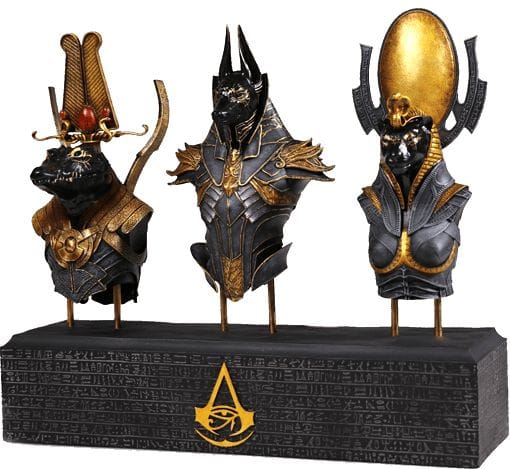![A very high-quality full-color 3D print [Source: GamePrint]](https://fabbaloo.com/wp-content/uploads/2020/05/image-asset_img_5eb0a4f570869.jpg)
One of the hardest tasks in 3D printing is the production of highly complex figurines in color material.
3D printing of figurines has long been a popular activity among desktop 3D printing enthusiasts, and particularly among gamers. Very often you will see game pieces being 3D printed, either original or stock designs.
The first problem is in the method of obtaining the 3D model for the figurine. While some are easily obtained through online sales, very few enthusiasts have the 3D CAD skills and tools to properly design the desired figurine themselves.
An increasingly popular source for figurine designs is from within virtual reality games, where professional artists have created elements that are sometimes mixed together to create unique, personalized 3D characters or objects. In some cases these are unique to the player, who then has significant affinity to them. The issue is obtaining the 3D model from the game, which in many cases is near impossible.
Some games and third party plugins or utilities do allow export of 3D content, but this is not always encouraged by the content owners. Once the 3D model is in hand, it potentially could then be 3D printed.
But there is another problem: the geometry of these figurines is often highly complex, as they were designed by the original artist for visual use without regard to the printability of the item. This results in 3D models that include many pathological features, such as thin unsupported swords, numerous small overhangs, poor structural integrity and even discontiguous elements.
3D printing these is quite challenging on any equipment. While many enthusiasts use the more commonly available extrusion-based desktop 3D printing equipment, some have switched to the higher-resolution SLA-style devices at extra cost.
But while SLA equipment provides superior resolution, the nature of the process usually requires a considerable amount of support structure, which must be painfully removed in a tedious post-print step.
SLS-style 3D printing could be a better solution, as the powder used in the process provides an automatic support mechanism, eliminating the need for support structures entirely. However, the cost of SLS equipment is out of range for almost all enthusiasts, unless used through a 3D print service.
If all this wasn’t sufficiently complex, it gets far worse if you want to 3D print the figurine in full color, which in most cases is desired due to the design of the character or object.
First, color 3D printing equipment is still quite rare and secondly it is often very expensive to use. Current full-color 3D printing equipment is mostly restricted to those using the Stratasys J750, Mimaki equipment or Mcor Technologies’ Arke. The costs of these are well beyond the cost of any enthusiast and even some smaller 3D print service bureaus.
One solution to this dilemma I’ve recently run across is GamePrint. It’s a new venture started by Mixed Dimensions, the same folks who are behind the increasingly popular MakePrintable 3D model repair service.
GamePrint is an optimized 3D print service specializing in highly complex 3D gaming pieces. They explain:
“GamePrint combines our proprietary 3D printing technology with an artisanal approach to production, allowing gamers to create, capture and order collectibles featuring their personal gameplay moments (incl. characters, vehicles and dioramas) resulting in the highest quality 3D printed one-of-a-kind collectibles, GamePrint is our vision to disrupt merchandising utilizing 3D Printing.”
This seems to be a good match, as Mixed Dimensions’ comprehensive 3D model repair technologies would be well suited to taken on the sometimes pathologically incorrect 3D models sometimes exported by virtual reality systems.
![Perhaps the most challenging full color 3D print ever [Source: GamePrint]](https://fabbaloo.com/wp-content/uploads/2020/05/image-asset_img_5eb0a4f5ce313.jpg)
GamePrint can accomplish feats of color 3D printing that are astonishing. Here we see an actual full-color 3D print of an item with geometry so complex I cannot imagine attempting a 3D print of it on any equipment. I don’t know what they are doing to reliably produce such prints, but color me impressed.
So far it seems that GamePrint is marketed through third party gaming sites offering 3D prints at their online stores. In this way the gaming companies can retain their intellectual property, as the 3D model travels between the game company and GamePrint only. Currently they list connections with Star Trek Online and Ubisoft’s Assassin’s Creed: Origins.
![3D printing full color figurines directly from DAZ Studio [Source: GamePrint]](https://fabbaloo.com/wp-content/uploads/2020/05/image-asset_img_5eb0a4f624956.jpg)
They also offer a plugin for DAZ Studio, a 3D CAD tool specializing in 3D character design, so it is also possible for the public to design a figurine and get it 3D printed through GamePrint.
Via GamePrint











